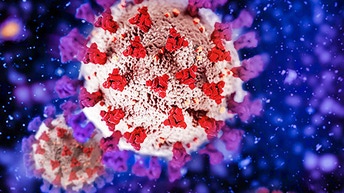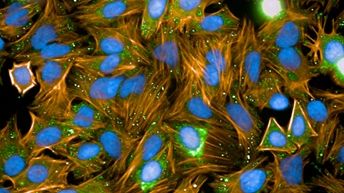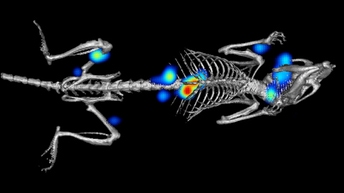Viral genomics
Viral genomes exhibit enormous diversity in their makeup: the majority are based on RNA, although DNA-based viral nucleic acids are not uncommon.
Viral genomes can be linear, circular, or segmented; single-stranded or double-stranded; positive-sense or negative-sense. Furthermore, many viruses have high rates of mutation, such as point mutations, recombinations, or segment reassortments, which can render them resistant to antiviral treatments – or result in a new, more virulent strain if a major genetic change is involved.
Virus detection and drug discovery
Discovery of new antiviral therapies is critical for global human health, particularly due to the speed that new viruses such as SARS-CoV-2 or influenza viruses can emerge. Standard drug discovery pipelines can take over a decade to deliver a product to market. One way to accelerate development, especially in times of high unmet medical crises such as COVID-19, is to repurpose existing drugs. Whether it’s for drug repurposing or discovery research, detecting viruses in cell cultures and quantifying viral replication reliably are critical to fighting existing or emerging viruses.
Host virus interactions
Viruses replicate through host cells and interact with many different proteins. These protein-protein interactions (PPIs), known as the virus-host interactome, can be targeted with therapeutic drugs to inhibit viral infection or subsequent replication. Developing inhibitors against the virus-host interactome by targeting cellular proteins is a promising approach to circumvent the possible emergence of drug-resistant virus mutants, as cellular proteins have much lower intrinsic mutation rates than viral proteins. Another approach to reduce viral escape mutants is to develop antibody cocktails, a mix of neutralizing antibodies that target different epitopes on viral surface proteins.
Immune response and vaccines
The innate immune system is the body’s first line of defense against viral disease. Different cell types protect the host from infection by foreign agents in a nonspecific manner. If a pathogen overcomes this defense, the adaptive immune system is activated to produce antibodies and confer a long-lasting resistance. Neutralizing antibodies that prevent a pathogen from binding to its host cell receptor play a major role in fighting viral infections and are often the desired outcome of vaccination.


































